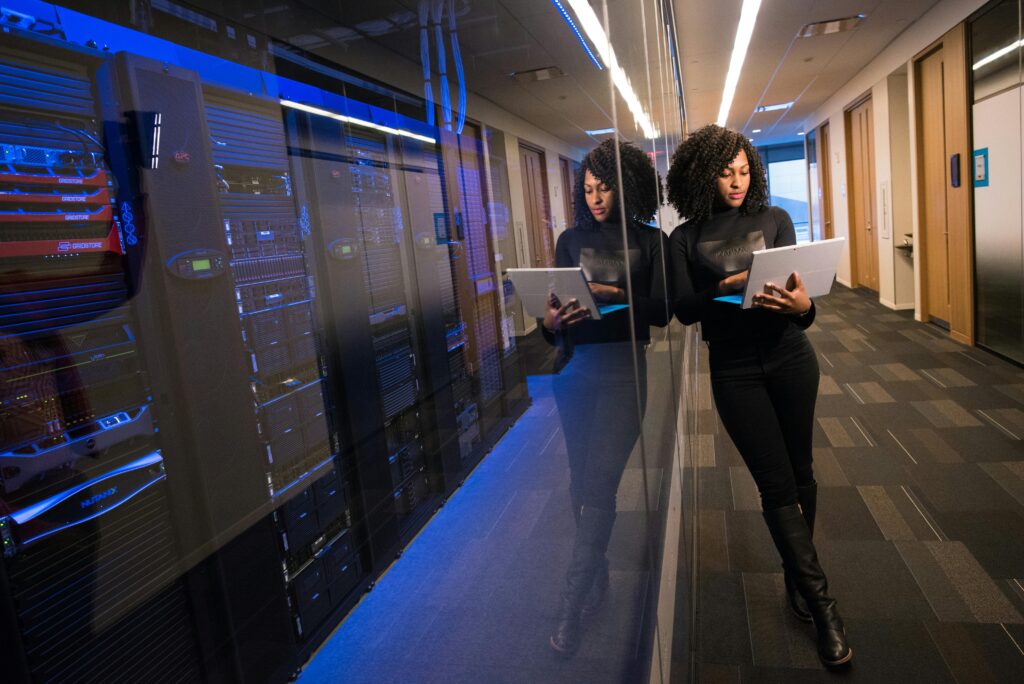How 5G is Transforming Remote Work and Digital Life
Introduction: The rollout of 5G technology is one of the most significant technological advancements in recent years, and its impact is being felt across industries. One area that is experiencing a dramatic transformation is remote work. With the promise of ultra-fast speeds, lower latency, and more reliable connections, 5G is not just enhancing how we work—it’s fundamentally changing the digital landscape. In this blog post, we’ll explore how 5G is revolutionizing remote work and the broader digital world, helping businesses, employees, and consumers thrive in an increasingly connected world.
1. The Basics of 5G Technology
Before diving into how 5G is transforming remote work, it’s important to understand the key features that set it apart from its predecessors. 5G technology offers:
- Ultra-fast download and upload speeds: 5G promises speeds up to 100 times faster than 4G, enabling seamless data transfer and low-latency experiences.
- Low latency: 5G has an extremely low delay in transmitting data, allowing near-instant communication and more responsive connections.
- Massive device connectivity: With 5G, millions of devices can be connected simultaneously without sacrificing speed or performance, paving the way for the Internet of Things (IoT).
These features make 5G the ideal foundation for the future of remote work and a digital-first world.
2. Boosting Remote Work Productivity with Seamless Connectivity
One of the key advantages of 5G for remote work is the ability to stay connected without interruption. With high-speed and low-latency connections, remote workers can enjoy a much more stable and productive experience, especially when using cloud-based applications and services.
- Faster Cloud Access: With 5G, employees can access and work on cloud-based files and applications without delays, whether they’re working from home, a coffee shop, or on the go.
- Improved Video Conferencing: Video calls and meetings, which are essential for remote work, will see significant improvements in quality. 5G ensures high-definition video conferencing with no buffering or lag, even in large group meetings.
- Real-time Collaboration: Remote teams can collaborate in real time, whether they’re sharing large files, editing documents, or using project management tools, thanks to the faster speeds and improved bandwidth that 5G offers.

3. Enabling a More Flexible and Mobile Workforce
5G technology also contributes to the rise of a more flexible, mobile workforce. As people are no longer tied to their desks or specific locations, they can work from almost anywhere without compromising on the quality of their internet connection.
- Seamless Mobile Work: With 5G, remote workers can use their smartphones or tablets for professional tasks like video conferencing, emailing, and file sharing with ease. As 5G expands, more professionals will be able to work from public spaces, parks, or while commuting without sacrificing performance.
- Virtual and Augmented Reality: 5G is the backbone for emerging technologies like virtual reality (VR) and augmented reality (AR), which will further enhance remote collaboration. VR meetings and AR tools for project visualization will allow remote teams to interact in more immersive and engaging ways.
4. Empowering Remote Teams with Advanced Collaboration Tools
5G is not just about faster speeds; it’s about enabling new ways of working. Businesses can leverage the power of 5G to implement next-gen collaboration tools that weren’t possible with previous network generations.
- Cloud-based Apps and Virtual Workspaces: Platforms like Microsoft Teams, Slack, and Google Workspace will run more efficiently and smoothly, with faster file syncing, instant messaging, and screen-sharing.
- High-quality Remote Support: IT support teams can remotely troubleshoot and resolve issues more effectively with high-speed data transfer, reducing downtime for employees and improving overall productivity.
5. The Impact of 5G on Hybrid Work Environments
Hybrid work environments—where employees split their time between the office and remote locations—are becoming more common. With 5G, businesses can create seamless hybrid experiences, bridging the gap between office-based workers and remote employees.
- Office to Home Connectivity: Employees working from the office can experience the same fast internet speeds and low-latency connections when working remotely, allowing for a consistent experience regardless of location.
- Flexible Workspaces: Employees can work from a variety of locations, from coworking spaces to cafes, without worrying about unreliable internet connections. 5G ensures that the work environment remains consistent, regardless of where it takes place.

6. 5G’s Role in the Future of Telecommuting and Remote Collaboration
5G is setting the stage for an even more connected future, where telecommuting and remote collaboration become the norm. The ability to seamlessly work from home, the office, or anywhere else, is creating new opportunities for businesses to tap into a global talent pool.
- Access to Global Talent: With 5G enabling reliable remote work, businesses can hire talent from anywhere in the world. This opens up opportunities for companies to build diverse, distributed teams, leading to more innovation and a wider range of skill sets.
- Increased Business Agility: The ability to quickly adapt to remote work and telecommuting helps businesses remain agile in an unpredictable world. Whether it’s a crisis or a business expansion, 5G ensures that companies can scale operations without technological limitations.
7. How 5G Improves Security for Remote Work
As more employees work remotely, cybersecurity becomes increasingly critical. 5G can help businesses enhance their security measures by providing better encryption, stronger networks, and more reliable connections.
- Improved Encryption: 5G networks offer enhanced encryption protocols, reducing the likelihood of security breaches during remote work activities.
- Secure IoT Integration: With the rise of IoT devices in remote work environments, 5G’s ability to securely connect multiple devices without sacrificing performance makes it a vital tool for businesses managing remote workforces.
8. The Digital Transformation: How 5G is Reshaping the Entire Digital Landscape
5G’s impact extends far beyond remote work. The digital transformation fueled by 5G will influence a wide range of industries, including healthcare, entertainment, education, and manufacturing.
- Smart Cities: 5G will enable the development of smart cities with real-time data sharing, improved traffic management, and enhanced public services.
- Telemedicine: Remote healthcare services, such as telehealth and virtual consultations, will become more efficient and accessible with 5G’s low latency and fast speeds.
- Gaming and Entertainment: 5G will also revolutionize entertainment, enabling cloud gaming, immersive VR experiences, and real-time interactive events.





Leave a Reply